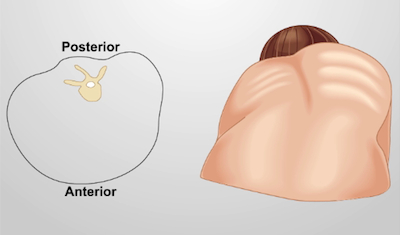Esame obiettivo dell'apparato respiratorio I: ispezione e palpazione
Panoramica
Fonte: Suneel Dhand,MD, Medico curante, Medicina interna, Beth Israel Deaconess Medical Center
I disturbi dell'apparato respiratorio con una lamentela principale di mancanza di respiro sono tra i motivi più comuni per la valutazione sia ambulatoriale che ospedaliera. L'indizio visibile più ovvio di un problema respiratorio sarà se il paziente mostra segni di difficoltà respiratoria, come la frequenza respiratoria veloce e / o la cianosi. In una situazione clinica, questo richiederà sempre attenzione emergente e ossigenoterapia.
A differenza della patologia in altri sistemi corporei, molti disturbi polmonari, tra cui la broncopneumopatia cronica ostruttiva (BPCO), l'asma e la polmonite, possono essere diagnosticati solo con un attento esame clinico. Questo inizia con un'ispezione completa e una palpazione. Tieni presente che in situazioni non di emergenza la storia completa del paziente sarà già stata presa, acquisendo importanti informazioni sulle storie di esposizione (ad esempio, il fumo), che potrebbero dare origine a specifiche malattie polmonari. Questa storia può quindi confermare i risultati fisici durante l'esecuzione dell'esame.
Procedura
1. Preparazione all'esame
- Prima di esaminare il paziente, lavarsi accuratamente le mani con acqua e sapone o pulirle con un lavaggio antibatterico.
- Spiega al paziente che stai per eseguire un esame polmonare.
2. Posizionamento del paziente
- Assicurarsi che il paziente sia spogliato fino alla vita (le femmine tengono la biancheria intima ed espovano ogni emitace uno alla volta).
- Posizionare il paziente sul tavolo da esame con un angolo da 30 a 45 gra
Applicazione e Riepilogo
Cerca prima di tutto eventuali segni di difficoltà respiratoria in un modello di respirazione paziente e unico. Gravi malattie polmonari sottostanti saranno spesso evidenti semplicemente guardando i pazienti. Condizioni come la BPCO e l'enfisema possono rivelarsi nell'aspetto e nell'habitus corporeo di un paziente. Questi pazienti possono essere classificati liberamente come "puffers rosa" o "bloaters blu". I "puffer rosa" sono solitamente sottili e hanno enfisema. Hanno un torace iper-g.
Vai a...
Video da questa raccolta:

Now Playing
Esame obiettivo dell'apparato respiratorio I: ispezione e palpazione
Physical Examinations I
157.4K Visualizzazioni

Approccio generale all'esame obiettivo
Physical Examinations I
117.6K Visualizzazioni

Osservazione e ispezione
Physical Examinations I
95.1K Visualizzazioni

Palpazione
Physical Examinations I
84.5K Visualizzazioni

Percussione
Physical Examinations I
101.8K Visualizzazioni

Auscultazione
Physical Examinations I
62.3K Visualizzazioni

Adeguamento corretto dell'abbigliamento del paziente durante l'esame obiettivo
Physical Examinations I
83.4K Visualizzazioni

Misurazione della pressione sanguigna
Physical Examinations I
108.8K Visualizzazioni

Misurazione dei segni vitali
Physical Examinations I
115.0K Visualizzazioni

Esame obiettivo dell'apparato respiratorio I: percussione e auscultazione
Physical Examinations I
213.0K Visualizzazioni

Esame obiettivo del cuore I: ispezione e palpazione
Physical Examinations I
176.6K Visualizzazioni

Esame obiettivo del cuore II: auscultazione
Physical Examinations I
140.1K Visualizzazioni

Esame obiettivo del cuore III: suoni cardiaci anormali
Physical Examinations I
91.9K Visualizzazioni

Esame obiettivo della vascolatura periferica
Physical Examinations I
68.8K Visualizzazioni

Esame vascolare periferico utilizzando un Doppler a onda continua
Physical Examinations I
38.6K Visualizzazioni




